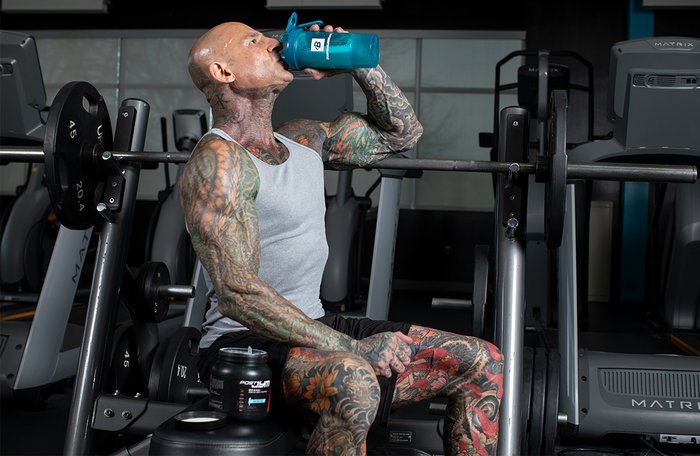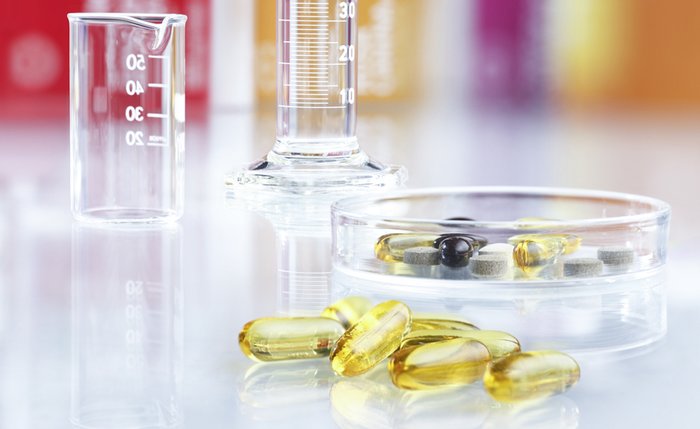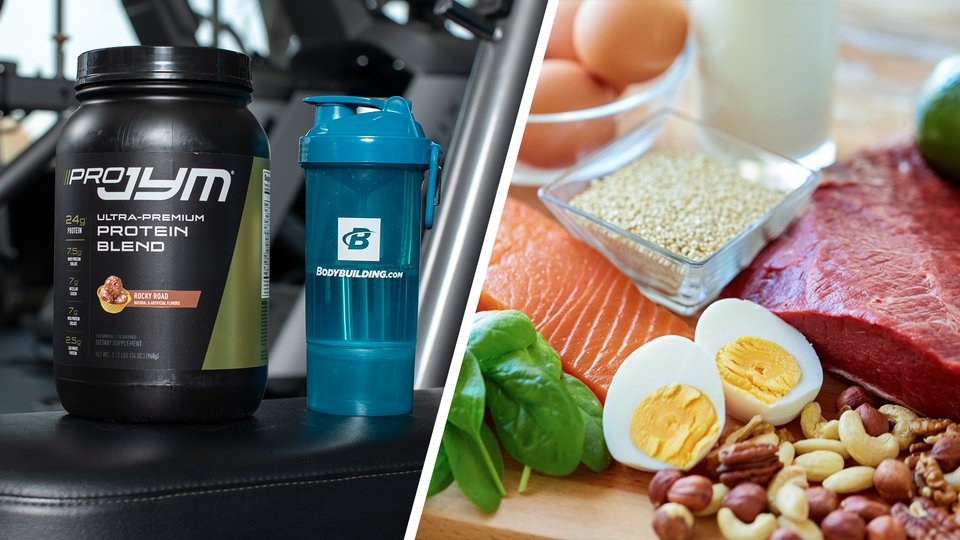Products You May Like
You may think that if you’re training less, doing less cardio, or even being inactive altogether, you don’t need as much protein in your diet as when you’re going full bore in the gym.
Totally wrong!
Granted, those who train and stay active have great protein demands, but that doesn’t mean you should ignore your protein intake if you get injured and can’t train, get tied up with other life obligations and start slacking on your workouts, or are training with less volume or intensity for some other reason (like, say, the COVID-19 stay-at-home orders).
Multiple studies have shown that protein intake is absolutely critical for inactive people to prevent muscle loss. I’ll break down those studies right here, and, I hope, save you some hard-earned muscle.
Prevent Muscle Atrophy with High Protein
A 2013 study published in the journal Nutrition Reviews confirmed the well-known fact that muscle disuse, aka inactivity, leads to atrophy, or muscle loss.[1] The researchers found that “maintaining protein intake during a period of disuse attenuates disuse atrophy.” Basically, keeping protein intake high prevents muscle loss when you’re not training or are training less frequently or less intensely. This is important, because the last thing you want is to lose muscle.
The researchers concluded that supplementing with dietary protein, like protein powder or essential amino acids (like BCAAs), is a good strategy for preserving muscle during periods of inactivity.*

That’s in line with what I’ve been saying for years: Whether you’re training hard or hardly training, you should shoot for at least 1 gram of protein per pound of body weight daily and even up to 1.5 grams per pound. That’s a hell of a lot of chicken breasts and eggs! You can’t get there with whole foods alone. The most convenient way to do it is to get some of it through protein powder. Plus, my Pro JYM protein contains a perfect blend of whey, casein, and egg to maximize protein synthesis to build and maintain muscle.*
For a more in-depth understanding of the importance of protein powder and how muscle synthesis works, read my article “3 Ways to Grow the Most Muscle with Protein Powder.“
As for amino acids, both Pre JYM and Post JYM contain the critical aminos leucine, isoleucine, and valine.
Be More Anabolic with Protein and Leucine
A 2014 study looked at older adults and found that dietary protein and amino acid supplementation—at least 30 grams of protein and 3 grams of the branched-chain amino acid leucine per serving—triggered anabolism (muscle building) and muscle maintenance in sedentary individuals.[2] Leucine supplementation was also highlighted in a 2016 study that looked at preserving muscle during disuse.[3]*
The researchers mentioned that creatine and fish-oil-derived omega-3 fatty acids can further help prevent muscle loss during periods of inactivity. Creatine is present in Pre JYM and Post JYM, and my Omega JYM fish oil provides adequate amounts of all the most critical omega-3 fats.

Greater Protein Synthesis in Injured Athletes Through Dietary Protein
The last study, published in 2015, looked at injured athletes.[4] So, we’re not talking about the elderly anymore. These were young people who were highly active and highly trained and got injured and couldn’t train as much as usual, if at all.
“Dietary consumption [of protein] is of critical importance for stimulating muscle protein synthesis rates throughout the day,” the researchers note, concluding that “maintaining or increasing daily protein intake by focusing upon the amount, type, and timing of dietary protein ingestion…can restrict the loss of muscle mass and strength during recovery from injury.”
Yes, during recovery from injury. Or, when you’re not injured but you’re sitting on your ass more and training less!
Jim’s Take-Home Message
By keeping your protein intake high, you’ll lose less muscle during times of inactivity. Get that protein from lean meats (lean steak, chicken breasts), eggs, dairy (for example, cottage cheese), and protein powder. I also recommend taking BCAAs—either through Pre JYM, Post JYM, or a stand-alone BCAA product—when you’re not getting at least 30 grams of protein (including 3 grams of leucine) in a meal, to make sure you’re spiking muscle protein synthesis.*
For more information on taking BCAAs between meals, read my article “The Best Ways to Use BCAAs.“
*These statements have not been evaluated by the Food and Drug Administration. This product is not intended to diagnose, treat, cure, or prevent any disease.
Want unlimited access to all of my programs and an endless supply of content like this? Visit JimStoppani.com and become a member.
References
- Wall, B. T., & van Loon L. J. C. (2013). Nutritional strategies to attenuate muscle disuse atrophy. Nutrition Reviews, 71(4), 195-208.
- Thalacker-Mercer, A. & Drummond, M. (2014). The importance of dietary protein for muscle health in inactive, hospitalized older adults. Annals of the New York Academy of Sciences. 1328(1), 1-9.
- Galvan, E., Arentson-Lantz, E., Lamon, S., & Paddon-Jones, D. (2016). Protecting skeletal muscle with protein and amino acid during periods of disuse. Nutrients, 8, 404.
- Wall, B. T., Morton, J. P., & van Loon, L. J. C. (2015) Strategies to maintain skeletal muscle mass in the injured athlete: nutritional considerations and exercise mimetics. European Journal of Sport Science, 15(1), 53-62.
